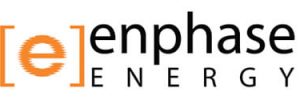Frequently Asked Questions for Solar Products and Installations
Solar panels installed at home are made of photovoltaic cells or bunches of solar cells which are made of silicon semiconductors. There are two types of silicon semiconductors p-type and n-type. The semiconductor absorbs the sunlight during the day and generates an electric current. The solar cells produce direct current (DC), which needs to be converted to alternating current (AC) using an inverter for use at home.
If you were to install a 6.6 KW solar system (September 2021), the average cost for installing high-quality components of a solar panel is $4,500 to $8,500. This is with factoring in the subsidy by the federal government scheme.
The number of solar panels needed for your house depends on the size of the house and the output from each solar panel installed. For example, if your house needs 24kWh’s per day, then there will be approximately 17 x 390watt modules.
The average solar system will take 3 to 5 years to repay itself, according to a survey by Finder.com.au. On average in a 25 years life span of a 6.6KW solar system, it will save you $30,000.
A solar panel system can be cash-flow positive if the profits or gains from the solar system are above what was previously spent on one’s power bill. With the right size system and solar plan from your retailer cash flow positive is very much achievable.
There are a few eligibility rules for solar rebates:
- The solar system must be a small-scale solar PV type system
- Install of the solar system should be in a recognized premise e.g. houses, shops, residential apartments etc.
- The solar system must be new.
The solar panels do not require routine maintenance. However, it is advisable that you clean the solar panel from time to time to ensure that sand or any other debris is removed. With a clean solar panel, the electricity production will be higher.
The average lifespan of a solar panel is 25 years. During this period the production of electricity is as per the manufacturer’s timeframe. After this period the solar panels will continue to produce electricity but the capacity of production can be lower.
According to a survey conducted by Origin energy, 85% of Australians say that solar panels increase the value of your home. There has been an increasing cost of the electricity bill and this has made many people turn to renewable energy such as solar energy.
During the day the solar panel continuously generates electricity. After sunlight is gone the system stops producing electricity, therefore it is advisable to have batteries for power storage which is then used at night. If you don’t have a battery you will be forced to revert to using the power grid.








